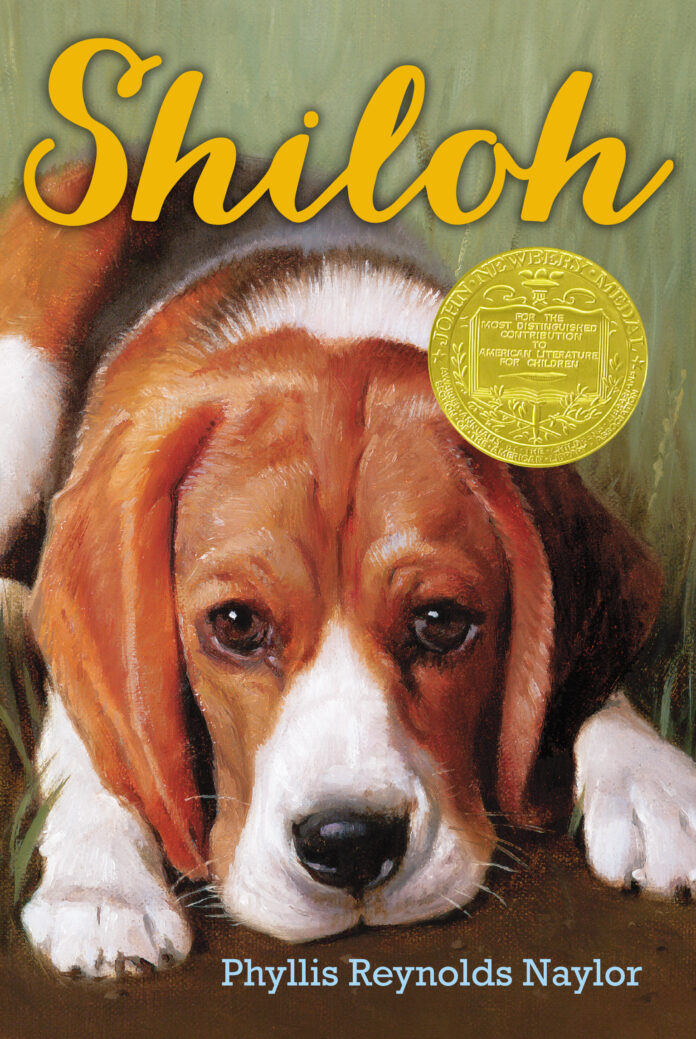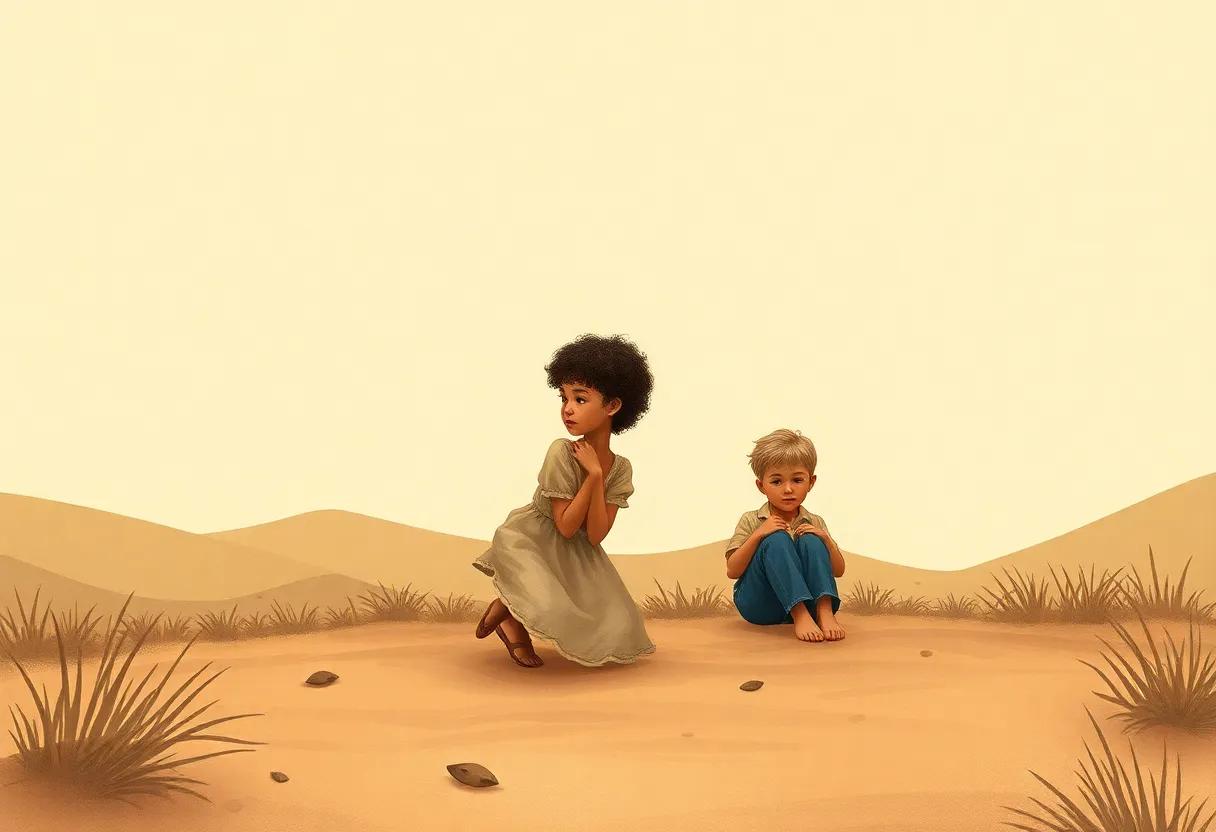In the quiet hills where innocence meets the complexities of human nature, Phyllis Reynolds Naylor’s Shiloh unfolds as more then just a story about a boy and his dog. It is indeed a nuanced exploration of friendship, trust, and the moral choices that define us. This timeless tale invites readers to ponder the delicate balance between right and wrong,loyalty and justice,set against the backdrop of small-town life.As we journey through the pages of shiloh, we are encouraged to rediscover not only the warmth of genuine companionship but also the frequently enough challenging path of ethical integrity. This review delves into how Naylor’s narrative breathes new life into these enduring themes, offering a lens through which readers of all ages can reflect on the true meaning of friendship and morality.
Themes of Compassion and Trust explored through the Heartwarming Bond between shiloh and Marty
At the core of the narrative lies a tender exploration of how empathy can bridge divides and foster unexpected friendships. Through Marty’s unwavering care for Shiloh, readers witness compassion transcending circumstances-an innocent act of kindness that challenges societal norms and personal fears. Their interactions reveal that trust is not merely given but earned, cultivated through patience and understanding. The story illustrates that when one opens their heart to vulnerability, genuine connections flourish, transforming lives in profound ways. This dynamic invites reflection on the power of human (and animal) relationships to inspire courage and moral growth.
The relationship between Marty and Shiloh also serves as a subtle commentary on ethical dilemmas and the choices that define our character.Marty must balance his loyalty to Shiloh with his respect for the rules and authority around him, prompting readers to consider the nuances of right and wrong. The following table encapsulates the key moral themes portrayed in their bond:
| Theme | Manifestation in the Story | Lessons for Readers |
|---|---|---|
| Compassion | Marty’s protective instincts toward Shiloh | Empathy encourages action despite challenges |
| Trust | Shiloh’s gradual acceptance of Marty | Building trust requires patience and consistency |
| Morality | Marty’s struggle with honesty versus kindness | Ethical decisions can be complex but essential |
- Acts of kindness - small, meaningful gestures that change perspectives.
- Overcoming fear – bravery in forging connections despite uncertainty.
- Personal growth - evolving values through lived experiences.
How Shiloh Challenges Traditional morality in the Context of Family Loyalty and Personal Integrity
In Shiloh, Phyllis reynolds Naylor masterfully subverts the classic notions of right and wrong by placing the protagonist, Marty, in a moral quandary where his loyalty to family is tested against his compassion and sense of justice. traditionally, family loyalty is deemed absolute-children obey parents and uphold family values without question. However, Marty’s actions reveal a deeper, more nuanced ethics that place personal integrity above blind obedience.Faced with the abusive and neglectful treatment of Shiloh, the dog, Marty chooses to protect the creature even if it means deceiving his father and breaking community rules. This narrative thread challenges the reader to rethink what true loyalty looks like and whether unquestioning allegiance to family always equates to moral goodness.
- Empathy over obedience: Marty prioritizes compassion for Shiloh over parental demands.
- Individual conscience: The story highlights the importance of personal integrity in ethical decision-making.
- Questioning authority: Marty’s rebellion is not a mere act of defiance but a pursuit of justice.
Moreover, the novel presents a subtle commentary on the complexities of moral behavior within close-knit communities where the lines between right and wrong can blur. The traditional family unit is portrayed not only as a source of safety but also as an institution that sometiems perpetuates harm when societal norms are unquestioningly accepted. Through Marty’s internal conflict, readers witness a fresh perspective where ethical integrity means confronting uncomfortable truths and prioritizing what is just over what is expected. This balance between compassion and responsibility is encapsulated in the following comparison:
| Traditional Morality | Marty’s Moral Approach |
|---|---|
| Unconditional family obedience | Questioning family actions when unjust |
| Following laws and community rules strictly | Breaking rules for greater good |
| Duty defined by societal expectations | Ethics guided by empathy and personal conscience |
The Role of Nature and Setting in Shaping the Story’s Emotional and Ethical Landscape
In Shiloh, the rural Appalachian setting is more than just a backdrop; it breathes life into the narrative’s soul, casting a profound influence on the characters’ emotional journeys. The dense forests, winding creeks, and open fields create a space where young Marty must confront his innermost values, embodying a world where nature’s purity contrasts starkly with human conflicts. This surroundings nurtures a sense of innocence and vulnerability, compelling the reader to feel the stakes of Marty’s choices as deeply as if they were their own.The quiet, often harsh landscape mirrors the ethical dilemmas Marty faces, reinforcing themes of loyalty, courage, and compassion through it’s ever-present, unjudging silence.
- Forests and creeks: Symbolize freedom and moral clarity
- Isolated rural life: Amplifies the stakes of personal integrity
- Natural obstacles: Reflect internal struggles and growth
More than just a physical space, this setting maps the emotional and ethical contours of the story. Nature operates as an almost spiritual force,encouraging introspection and connection between characters,especially between Marty and Shiloh,the dog. This connection is not only a bond of friendship but also a moral awakening, highlighting the tension between societal rules and personal convictions.The interplay between human characters and the natural world becomes a silent dialog on justice, mercy, and empathy, ultimately shaping an intimate landscape where ethical growth feels both inevitable and deeply human.
Character Development and the Nuances of Friendship Portrayed in Young Marty’s Journey
Young Marty’s journey in Shiloh is a poignant exploration of personal growth and the delicate layers that friendship entails. His evolving relationship with Shiloh, a dog caught between cruelty and kindness, mirrors the complexities of trust and loyalty in human connections. Marty’s internal conflict-balancing honesty with a desperate need to protect-underscores a profound lesson in morality,where right and wrong become fluid concepts shaped by circumstance and heart. Each interaction,whether with family or adversaries,peels back a layer of Marty’s character,revealing his capacity for empathy,courage,and resilience.
What stands out is how Marty’s friendships extend beyond humans, challenging traditional boundaries and inviting readers to rethink what it means to care and to stand up for what’s just. These relationships are marked by:
- Unspoken understanding: Moments of silent connection that reveal deep bonds.
- Conflicted loyalties: When doing what’s right collides with social expectations.
- transformative growth: How challenges forge a stronger sense of identity and conviction.
| Character | Quality Revealed | Impact on marty |
|---|---|---|
| Marty | Determination | Learned the power of standing firm in beliefs |
| Marty’s Dad | Pragmatism | Challenged Marty to justify his choices |
| Shiloh | Innocence | Ignited Marty’s protective instincts |
Ethical Dilemmas Faced by Children in Shiloh and Their Relevance to Modern Readers
In Shiloh, young Marty grapples with profound ethical challenges that transcend his age, inviting readers to reflect on the blurry lines between right and wrong. Caught between respecting his father’s wishes and his love for the abused dog, Marty embodies the struggle of moral growth that resonates far beyond the pages. His decisions highlight issues such as loyalty versus honesty and the collision between justice and compassion, provoking readers to examine how contextual factors influence ethical choices. This depiction is particularly poignant for modern audiences who face similarly complex questions in an increasingly multifaceted world.
- Empathy over legality: Marty’s choice to protect Shiloh, even if it means breaking the law.
- Family loyalty: Balancing love for kin with personal moral beliefs.
- Courage to act: Standing up against wrongdoing despite fear or uncertainty.
By inviting readers to witness a child’s internal battle with these dilemmas, Naylor not only crafts a compelling narrative but also sparks timeless conversations about integrity and responsibility. The ethical framework within the story acts as a mirror, reflecting challenges faced by many today, such as advocating for the voiceless or questioning social norms when they conflict with personal values. As such, marty’s journey is a subtle yet profound reminder that morality is not always black and white but often requires courage and critical thinking-even from the youngest among us.
The Impact of Shiloh’s Narrative on Young Readers’ understanding of Right and Wrong
Phyllis Reynolds Naylor’s Shiloh masterfully challenges young readers to grapple with complex ethical dilemmas through the eyes of a boy determined to protect an innocent dog at all costs. The narrative’s exploration of honesty, loyalty, and compassion serves as a subtle yet powerful guide, inviting children to reflect on their own values. As readers journey alongside the protagonist, they encounter situations where the boundaries between right and wrong blur, prompting thoughtful consideration beyond simple black-and-white judgments. This nuanced portrayal encourages empathy and moral reasoning, fostering a deeper understanding that integrity sometimes requires challenging choices.
The story’s impact extends beyond the individual character arcs, offering readers tangible lessons embedded in everyday actions. Key themes that resonate strongly include:
- Empathy: Understanding others’ struggles and motivations.
- Courage: standing up for what is just despite fear or opposition.
- Accountability: Owning the consequences of one’s decisions.
- Kindness: Acting with generosity even when not required.
Together, these lessons provide a moral framework that helps young readers navigate their own social world with sensitivity and thoughtfulness.
| Character | Moral Challenge | Lesson for Readers |
|---|---|---|
| Marty | Protecting Shiloh from harm | Courage to act on one’s beliefs |
| Judd | Earning trust despite flaws | Complexity of human nature |
| Marty’s Family | balancing honesty with protection | Importance of support and dialogue |
Symbolism and Literary Devices that Enhance the Moral Lessons Within Shiloh
In Shiloh, Phyllis Reynolds Naylor masterfully employs symbolism to deepen the narrative’s exploration of right and wrong. Shiloh, the dog, is not merely a character but a living embodiment of innocence, trust, and the complexities of ethical decision-making. His presence in Marty’s life challenges the young protagonist-and readers alike-to navigate the murky waters of moral ambiguity.The fence around judd’s property, for example, symbolizes the barriers between societal rules and personal integrity, highlighting how Marty’s compassion pushes him to act beyond established boundaries. These symbols create a nuanced canvas where the lines between legal and moral obligations blur, inviting reflection on which laws serve humanity best and which hinder it.
Beyond symbolism,Naylor’s use of literary devices enriches the storytelling,amplifying the emotional resonance of Marty’s journey. Through vivid imagery, the quiet woods evoke a sanctuary of hope and transformation, a contrast to the harshness Marty faces in confronting Judd.The author’s adept use of internal monologue provides an intimate glimpse into Marty’s conscience, illustrating his evolving sense of justice. consider this compact overview of key devices, which showcase how Naylor crafts a layered tale of friendship and morality:
| Literary Device | Effect | Example |
|---|---|---|
| Symbolism | Represents themes of innocence and ethical struggle | Shiloh as a beacon of trust and compassion |
| Imagery | Creates emotional depth and connection | The peaceful woods as a refuge from moral conflict |
| Internal Monologue | Reveals Marty’s internal conflict and growth | His reflections on keeping or returning Shiloh |
| Foreshadowing | Builds tension around eventual decisions | Hints about consequences of defying Judd’s rules |
Why Shiloh remains a Timeless Classic in Children’s Literature for Teaching Empathy
at its core, shiloh serves as a gentle yet powerful guide for children navigating complex emotions such as kindness, loyalty, and fairness. By portraying the boy Marty’s unwavering commitment to protect a mistreated dog,the story invites young readers to step into another’s shoes and explore feelings beyond their everyday experiences. the book’s simple language paired with compelling moral dilemmas encourages readers to question right and wrong with empathy as their compass, making it a rich resource for fostering emotional intelligence.
- Relatable Characters: Marty’s struggles and growth resonate deeply with children, bridging generational gaps.
- Real-Life Context: The narrative prompts readers to evaluate their own ethical decisions in day-to-day encounters.
- Global Themes: Trust, compassion, and justice echo throughout, creating ongoing discussions about empathy.
| Element | Impact on Empathy Development |
|---|---|
| Character Actions | Encourage moral reasoning through personal responsibility |
| Emotional Depth | Facilitate understanding of others’ pain and joy |
| Narrative Challenges | Offer scenarios for critical thinking and perspective-taking |
Practical Recommendations for Using Shiloh in Educational Settings to Foster Moral Reasoning
Engaging students with Shiloh offers unique opportunities to explore complex ethical dilemmas through relatable storytelling. Educators can encourage critical thinking by posing questions about the protagonist’s decisions, such as the moral implications of hiding the dog from its owner or the conflict between personal loyalty and societal rules. Facilitating group discussions or role-playing activities allows students to step into the shoes of different characters, fostering empathy and revealing how perspective shapes our understanding of right and wrong. These methods cultivate an environment where students actively construct their moral framework rather than passively receive it.
To enhance these learning experiences, consider integrating the following strategies:
- Character Journals: Have students write diary entries from a character’s point of view to reflect on their moral reasoning.
- Debate Circles: Organise debates where students defend or critique actions taken by the characters, promoting respectful argumentation.
- Ethical Decision Maps: Create flowcharts mapping choices and consequences, helping visualize the complexity of moral decisions.
| Activity | Purpose | Outcome |
|---|---|---|
| Role Play | Empathy Building | Enhanced understanding of characters’ motivations |
| Character Journals | Self-Reflection | Develops perspective-taking and moral insight |
| debate Circles | Critical Thinking | Improved reasoning and respectful discourse |
Balancing Realism and Optimism in shiloh’s Portrayal of Difficult Family and Social Issues
Phyllis Reynolds Naylor masterfully navigates the delicate terrain of addressing heavy familial and societal challenges without tipping into despair or cynicism. The novel presents characters grappling with moral dilemmas, economic hardships, and broken trust, yet it always anchors these conflicts within a framework of hope. By intertwining gritty realism-such as Judd Travers’ troubled background and the ethical ambiguities Marty faces-with a subtle but persistent optimism,naylor invites readers to confront difficult realities while still believing in the power of compassion and redemption. This balanced storytelling amplifies the novel’s sincerity, making the struggles feel authentic rather than exaggerated for dramatic effect.
Throughout the narrative, the author implements a blend of complex emotional situations with moments of lightness and growth, illustrated beautifully through Marty’s unwavering determination and kindness. This equilibrium is evident in the way family and community dynamics are portrayed-not as static or idealized, but as evolving relationships full of second chances. Consider the subtle ways forgiveness and understanding are woven into the story’s fabric:
- Imperfect heroes: Characters are flawed but capable of change.
- Community Support: Small-town bonds offer solace amid hardship.
- Ethical Ambiguity: Choices reflect real-world complexity without clear-cut answers.
| Element | Realistic Portrayal | Optimistic Angle |
|---|---|---|
| Family Struggles | Conflict and mistrust | Opportunities for healing |
| Social Challenges | Economic hardship | Community kindness |
| Personal Morality | Ethical dilemmas | Growth through choices |
Exploring Phyllis reynolds Naylor’s Unique Storytelling Style and Its Influence on Young Readers
Phyllis Reynolds Naylor possesses a storytelling style that captivates young readers by weaving vivid, relatable characters with profound ethical dilemmas. her prose is simple yet evocative, allowing children to immerse themselves fully in the narrative without feeling overwhelmed. Through carefully balanced emotions and authentic dialogue, she invites readers to explore complex themes such as trust, loyalty, and compassion in accessible ways.This subtle guidance helps cultivate empathy while encouraging young minds to navigate the nuances of right and wrong on their own terms.
A few hallmarks define her unique influence on young audiences:
- Character-driven storytelling: Readers form personal connections with characters facing real-life challenges.
- Clear moral undertones: Ethical questions are posed without explicit answers, sparking critical thinking.
- Accessible language paired with rich imagery: Keeps engagement high while soothing young readers into complex topics.
| Story Element | Impact on Readers |
|---|---|
| Relatable Characters | Fosters empathy and emotional investment |
| Moral Ambiguity | Encourages critical thinking and personal values |
| Naturalistic Dialogue | Enhances authenticity and reader connection |
In revisiting Shiloh, Phyllis Reynolds Naylor gently invites readers to reflect on the enduring complexities of friendship and the quiet strength of moral conviction. Through the eyes of a young boy and his unwavering loyalty to a small, vulnerable dog, the story weaves a timeless tapestry of empathy and ethical growth. Whether experienced as a childhood favorite or a thoughtful exploration on maturity, Shiloh remains a poignant reminder of how our choices define not only who we are-but who we aspire to be.







